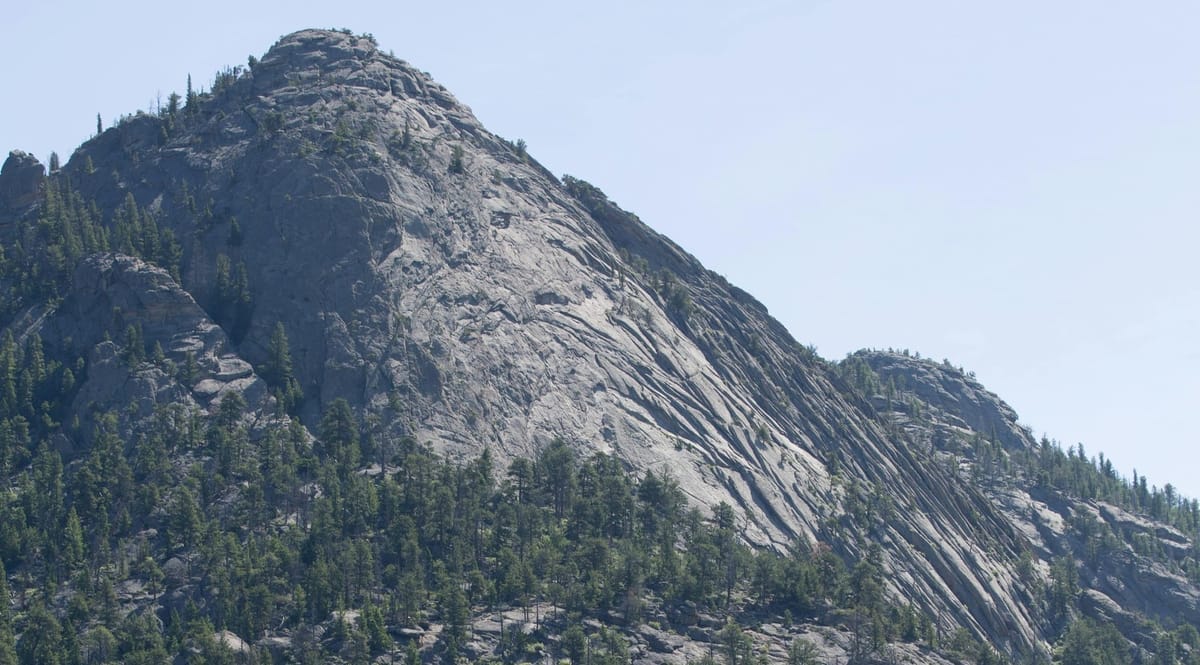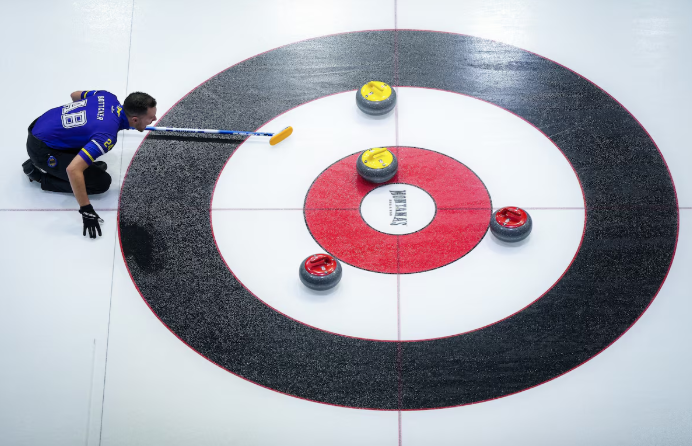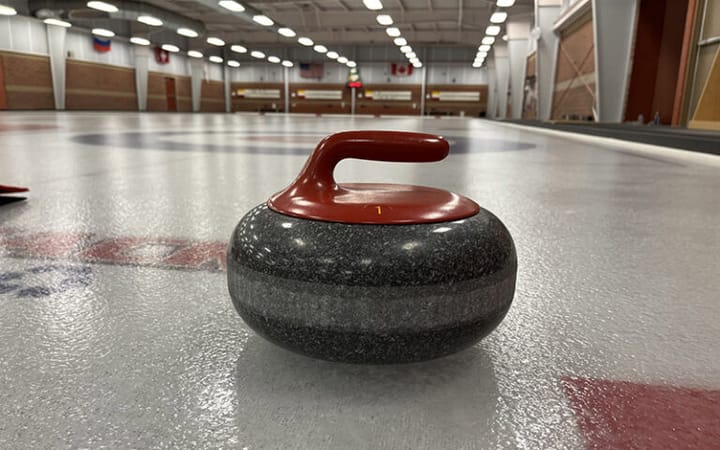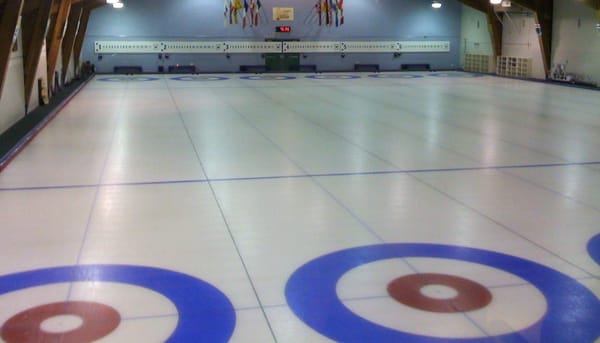Curling Stones: From Quarry to Sheet

Curling stones, those seemingly simple granite disks, are actually sophisticated pieces of sports equipment with a fascinating history and a surprising amount of nuance. The sources provide a glimpse into the world of curling stones, covering everything from their origins and composition to the factors that influence their movement and the strategies involved in using them effectively.
Origins and Types: A Tale of Two Quarries
The granite used in curling stones is sourced from specific locations known for producing high-quality stone suitable for the sport.
- For many years, the preferred source was Ailsa Craig, a small island off the coast of Scotland. Ailsa Craig is known for its unique micro-climate and distinctive blue hone granite, prized for its dense, fine grain, which creates a smooth and durable running surface. However, blue hone granite's tendency to chip, especially in colder climates, led to the search for a more robust alternative.
- That alternative was found in Wales, where Trefor granite, noted for its durability, became the material of choice for curling stone bodies. Trefor granite, however, has a coarser grain, which can result in a faster-wearing running surface.
- Modern curling stones often represent a hybrid of these two granite types, combining the best of both worlds. Many high-quality curling stones feature a Trefor granite body for durability with a blue hone granite insert for the running surface, offering both strength and a superior playing surface.
- There are other types of granite used to make curling stones, though they are not as common as blue hone and Trefor. Common green granite is one such alternative.
Why Rocks Curl: The Science of Spin
One of the defining features of curling is the curved path the stones take as they travel down the ice. This "curl" is not accidental; it is a result of the intentional rotation imparted to the stone during the delivery, combined with the unique properties of the ice surface.
- Rotation is Key: A curling stone thrown without any rotation would move in an unpredictable manner. By applying a controlled rotation, the curler influences the direction and degree of the curl. Clockwise rotation, referred to as an in-turn for a right-handed curler, results in a curl to the right, while counter-clockwise rotation, called an out-turn, leads to a curl to the left.
- Why the Curl?: The sources mention two prevailing theories that attempt to explain why rotating stones curl:
- Frictional Melting Theory: This theory proposes that the friction generated by the rotating stone melts a thin layer of ice beneath the running surface. This reduces friction on one side of the stone, causing it to curve in the direction of rotation.
- Scratch Theory: The scratch theory suggests that the rotating stone, particularly the leading edge of the running surface, creates microscopic scratches in the ice, forming a track that the stone follows, resulting in the characteristic curved path.
- Curl Influencers: Regardless of the specific mechanism behind the curl, the amount of curl a stone exhibits is impacted by several factors:
- Rotation Speed: The speed at which the stone rotates plays a significant role. A faster rotation will generally result in a more pronounced curl.
- Ice Conditions: The condition of the ice surface, including factors like temperature, pebble consistency, and overall smoothness, influences the degree of curl.
- Running Surface Roughness: The texture of the running surface, specifically the presence of microscopic scratches or bumps, impacts the amount of friction generated, thus influencing the curl. A rougher surface will typically create more friction and a tighter curl.
Matching Rocks and the Rock Book: Consistency is Key
Curling stones, though seemingly identical, can have subtle variations in their running surfaces and curl profiles due to differences in the granite and wear patterns. This is particularly important at higher levels of play, where consistency is paramount.
- Matching Rocks: To address these variations, experienced teams meticulously match their stones, a process of identifying and understanding the unique characteristics of each stone in their set. This involves repeatedly throwing the same shot with each stone and observing the final position and curl.
- The Rock Book: The data collected during the matching process is often documented in a rock book, a valuable resource that provides insights into each stone's tendencies and aids in strategy development. For example, a team might note which stones have a tendency to curl more or less than average, allowing them to select the most appropriate stone for a given shot based on the ice conditions and the desired outcome.
Curling Stone Maintenance: Fine-Tuning Performance
Maintaining the curling stones is essential for optimal performance and consistent results.
- Texturing/Scratching: Over time, the running surface of a stone can become polished, reducing its ability to grip the ice and affecting its curl. To restore a more aggressive curl, the running surface can be textured, or scratched, using specialized tools. This roughens the surface, increasing friction and resulting in a tighter curl. However, the sources suggest prioritizing adjustments to ice maintenance rather than resorting to frequent scratching, which can wear down the running surface prematurely.
- Assessing the Rocks: Regularly assessing the rocks, especially when playing on different ice surfaces or using unfamiliar stones, is crucial for identifying any inconsistencies. Recognizing mismatched rocks and adjusting strategy accordingly can be a game-changer. For instance, if a team realizes that some of their stones are curling significantly more than others, they might opt for more conservative shots, avoiding tight angles that could lead to misses.
Beyond the Basics: Advanced Considerations
The sources also highlight some advanced concepts related to curling stones, emphasizing the strategic depth of the sport.
- Drag Effect: This phenomenon occurs when two stones are in close proximity, typically touching or nearly touching. When a moving stone strikes a stationary stone, the first stone can "drag" the second stone in the direction it was traveling, even if the second stone was not directly in line with the intended target. Understanding the drag effect can be crucial for executing precise double takeouts, where the goal is to remove two opponent's stones with a single shot.
- Striking Band: The striking band is the area on the curling stone where the impact occurs during a collision with another stone. The shape and texture of the striking band can influence the drag effect. A thicker and rougher striking band will tend to grip the other stone more effectively, resulting in a more pronounced drag, while a smoother and narrower striking band will have less of an effect.
Curling Stones: More than Meets the Eye
Curling stones, though deceptively simple in appearance, play a multifaceted role in the sport. Their composition, the physics governing their movement, and the subtle variations in their behaviour add layers of complexity and strategy. The next time you watch or play curling, take a moment to appreciate the intricate interplay between stone and ice, and the skill required to master their manipulation.



